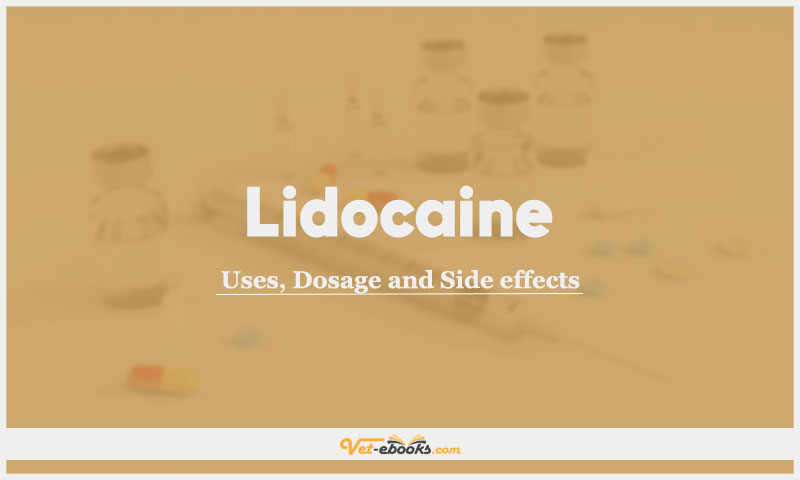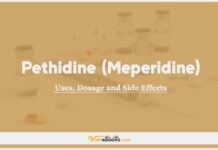Lidocaine (Lignocaine) In Dogs & Cats: Uses, Dosage and Side Effects

Overview
- Local anaesthetic activity is predicated on reversible sodium channel blocking, which prevents action potential propagation along the nerve fibre.
- Sensory nerve fibres are inhibited before motor nerve fibres, allowing for low-dose sensory blocking.
- Lidocaine also has antiarrhythmic properties of class 1b, lowering the rate of ventricular firing, action potential duration, and absolute refractory period while increasing the relative refractory period.
- Lidocaine has a short duration of effect and a quick beginning of action.
- The addition of adrenaline to lidocaine extends the duration of action by slowing systemic absorption.
Uses of Lidocaine (Lignocaine)
- Provision of local or regional analgesia using perineural, infiltration, local i.v. or epidural techniques.
- It is generally recommended that adrenaline-free solutions be used for epidural administration.
- Intratesticular lidocaine has been shown to reduce haemodynamic responses to castration in dogs and cats and is recommended to provide intraoperative analgesia during castration and reduce the requirement for inhalant anaesthetic agents.
- Also used to provide systemic analgesia when given i.v. by continuous rate infusion.
- First-line therapy for rapid or haemodynamically significant ventricular arrhythmias.
- May also be effective for some supraventricular arrhythmias, such as bypass-mediated supraventricular tachycardia, and for cardioversion of acute-onset or vagally-mediated atrial fibrillation.
- Widely used topically to desensitize mucous membranes (such as the larynx prior to intubation).
- EMLA cream is used to anaesthetize the skin before vascular cannulation.
Dose of Lidocaine (Lignocaine) in Dogs and Cats
Note: 1 mg/kg is 0.05 ml/kg of a 2% solution.
Dogs:
- Local anaesthesia: apply to the affected area with a small gauge needle to an appropriate volume.
- The total dose that should be injected is 4 mg/kg.
- Oesophagitis: 2 mg/kg p.o. q4–6h.
- Topical: apply a thick layer of cream to the skin and cover with a bandage for 45–60 min prior to venipuncture.
- Intraoperative analgesia given by constant rate infusion: 1 mg/ kg loading dose (given slowly over 10–15 min) followed by 20–50 μg (micrograms)/kg/min.
- Postoperatively, similar dose rates can be used but should be adjusted according to pain assessment and be aware of the likelihood of accumulation allowing an empirical reduction in dose rate over time.
- Ventricular arrhythmias: 2–8 mg/kg i.v. in 2 mg/kg boluses followed by a constant rate i.v. infusion of 0.025–0.1 mg/kg/min.
Cats:
- Local anaesthesia, topical, oesophagitis: doses as for dogs.
- Avoid systemic lidocaine for analgesia in cats due to the risk of drug accumulation, toxicity and negative haemodynamic effects.
- Ventricular arrhythmias: 0.25–2.0 mg/kg i.v. slowly in 0.25–0.5 mg/kg boluses followed by a constant rate i.v. infusion of 0.01–0.04 mg/kg/min.
Drug Dosage Calculator
You Should Give:
Side Effects of Lidocaine (Lignocaine) in Dogs and Cats
- Depression, seizures, muscle fasciculations, vomiting, bradycardia and hypotension.
- Seizures may be controlled with i.v. diazepam.
- Monitor the ECG carefully during therapy.
- Cats tend to be more sensitive to CNS effects.
- The CFC propellant used in unlicensed aerosol preparations (e.g. Xylocaine spray) is
alleged to have caused laryngeal oedema in cats and should not be used to desensitize the larynx prior to intubation.
Contraindications of Lidocaine (Lignocaine) in Dogs and Cats
- Do not give to cats by continuous rate infusion during the perioperative period due to the negative haemodynamic effects.
- Do not give lidocaine solutions containing adrenaline i.v.
- Do not use solutions containing adrenaline for a complete ring block of an extremity because of the danger of ischaemic necrosis.
Some Notes:
- Cimetidine and propranolol may prolong serum lidocaine clearance if administered concurrently.
- Other antiarrhythmics may cause increased myocardial depression.
Tip
Do You Want To Increase Your Veterinary Knowledge and Practical Skills?
You Can Now Browse and Download +3000 Books For Veterinary Professionals & Students Online.
Download Veterinary Books




















